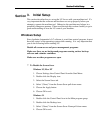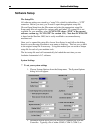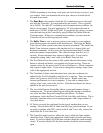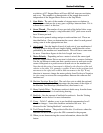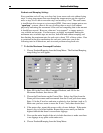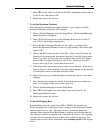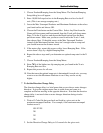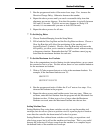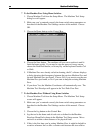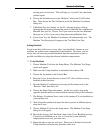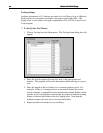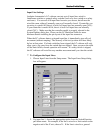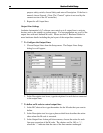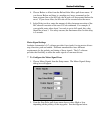
Section Section 33 Initial SetupInitial Setup
3030
1. Choose Feedrate/Ramping from the Setup Menu. The Feedrate/Ramping
Setup dialog box will appear.
2. Enter 10,000 full steps/sec/sec in the Ramping Rate text box for the X
axis. (This is an average ramping rate.)
3. Leave the Max Unramped Feedrates and Maximum Feedrates at the values
you found earlier and choose OK.
4. Choose the Point button on the Control Box. Select Any Point from the
Name pull-down menu and Incremental from the Coord pull-down menu.
Enter 1.0 in the X text box and choose the Rapid option from the Rate
pull-down menu. Make sure you have room to move the X axis 1 inch,
then choose Start. If the table moves at the Max Unramped Feedrate
instead of the Maximum Feedrate, there isn’t enough room to ramp and
you should increase the distance moved.
5. If the motor slips, repeat this process with a lower Ramping Rate. If the
motor doesn’t slip, try a higher Ramping Rate.
6. Repeat the above steps until you determine an optimal ramp rate for the X
axis.
7. Choose Feedrate/Ramping from the Setup Menu.
8. Enter 70% of the highest no-slip ramping rate you found in the X axis
Ramping Rate text box.
9. Repeat this process for all axes.
10. Note that once the optimal ramp rate is determined for each axis, you may
want to re-test the Maximum Feedrates to see if they can be set any
higher.
4 To Set the Direction Change Delay
The direction change delay is a brief pause that occurs when a motor changes
direction. It gives the stepper motor time to settle down and come to a
complete rest before moving in the opposite direction. Note that the direction
change delay is not used when a motor changes direction during circular
interpolation.
1. Write a G-Code file that goes back and forth in a given axis at the
maximum unramped feedrate. For example, if the maximum unramped
feedrate were 8:
G01 X2 F8
X0
X2
X0
2. Set the Direction Change Delay to 0.5 seconds for the given axis.




